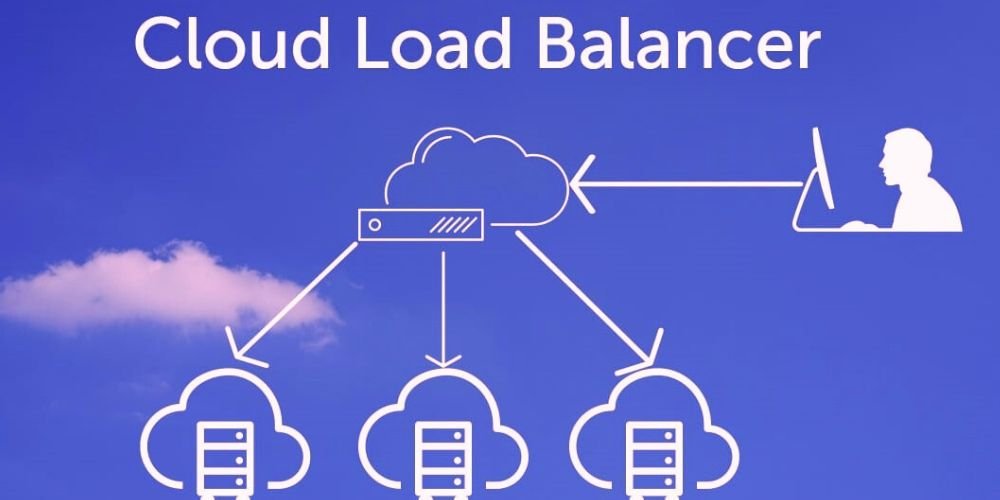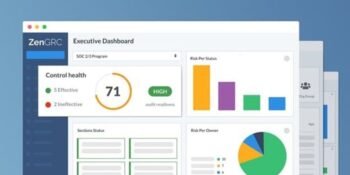In the dynamic landscape of cloud computing, managing traffic and ensuring high application availability are critical tasks for organizations striving to deliver seamless digital experiences to users. Cloud Load Balancers are indispensable tools for distributing incoming network traffic across multiple servers or resources, optimizing performance, and enhancing reliability. In this article, we delve into the significance, functionalities, and advantages of Cloud Load Balancers, elucidating how they streamline traffic management and improve application scalability in modern cloud infrastructures.
Understanding Cloud Load Balancers
Cloud Load Balancers are networking devices or services that distribute incoming application or network traffic across multiple backend servers, instances, or resources to ensure optimal resource utilization, maximize throughput, and minimize response times. They act as intermediaries between clients and servers, intelligently routing requests based on predefined algorithms and health checks to maintain application availability and performance.
Traffic Distribution and Load Balancing Algorithms
Cloud Load Balancers employ load-balancing algorithms to distribute incoming traffic across backend servers or resources based on server load, latency, or proximity. Common load-balancing algorithms include Round Robin, Least Connections, Weighted Round Robin, and Least Response Time, each offering different characteristics and trade-offs regarding performance, fairness, and resource utilization.
Health Checks and Failover Mechanisms
Cloud Load Balancers continuously monitor the health and availability of backend servers or resources using health checks and probes. Suppose a server fails a health check or becomes unavailable. In that case, the load balancer automatically routes traffic from the affected server to healthy servers, ensuring seamless failover and maintaining application availability during server failures or outages.
Session Persistence and Sticky Sessions
Cloud Load Balancers support session persistence mechanisms, also known as sticky sessions, to ensure that client requests are consistently directed to the same backend server for the duration of a session or user session. By maintaining session affinity based on client IP addresses, cookies, or session identifiers, load balancers help preserve session state and prevent issues such as session timeouts or data loss in stateful applications.
Advantages of Cloud Load Balancers
Cloud Load Balancers offer several advantages over traditional traffic management solutions, making them essential components of cloud architectures for organizations seeking high availability, scalability, and application performance. These advantages include improved reliability, scalability, flexibility, and cost-effectiveness, enabling organizations to deliver responsive and resilient services to their users.
Improved Reliability and Availability
Cloud Load Balancers enhance application reliability and availability by distributing incoming traffic across multiple backend servers or resources, reducing the risk of service disruptions or downtime due to server failures or traffic spikes. By automatically rerouting traffic away from unhealthy servers and maintaining session persistence, load balancers help ensure continuous service availability and seamless user experiences even during maintenance windows or hardware failures.
Scalability and Elasticity
Cloud Load Balancers support horizontal scalability and elastic scaling of application resources by dynamically distributing traffic to additional servers or instances as demand increases. As traffic patterns fluctuate or workload demands change, load balancers adjust capacity and scale resources up or down to handle peak or sudden traffic spikes, ensuring optimal performance and resource utilization without manual intervention.
Flexibility and Customization
Cloud Load Balancers offer flexibility and customization options to meet diverse needs and requirements of different applications and workloads. Organizations can configure load-balancing algorithms, health checks, session persistence settings, and traffic routing rules to tailor load-balancer behavior to specific use cases, application architectures, and performance objectives, maximizing flexibility and control over traffic management policies.
Cost-Effectiveness
Cloud Load Balancers are cost-effective solutions for distributing traffic and optimizing application performance compared to traditional hardware-based load balancers or dedicated traffic management appliances. Cloud service providers offer pay-as-you-go pricing models for load-balancing services, allowing organizations to pay only for the traffic they use without incurring upfront hardware costs or long-term commitments. Additionally, cloud load balancers help reduce operational overhead by automating traffic management tasks and minimizing the need for manual configuration or maintenance.
Implementation Considerations
When implementing Cloud Load Balancers, organizations should consider several factors to ensure effective deployment, configuration, and management of load balancing services. These considerations include traffic patterns, geographic distribution, health monitoring, and security requirements.
Traffic Patterns
Organizations must analyze traffic patterns and understand application requirements to select the appropriate type of load balancer and load-balancing algorithm. For example, Round Robin may be suitable for distributing traffic evenly across backend servers. At the same time, Least Connections or Least Response Time may be preferred for optimizing performance and minimizing latency in dynamic or variable workloads.
Geographic Distribution
Organizations operating globally must consider geographic distribution and latency-sensitive applications when deploying Cloud Load Balancers. By strategically placing load balancers in multiple regions or availability zones, organizations can reduce latency, improve responsiveness, and ensure high service availability for users distributed across different geographic locations.
Health Monitoring and Alerting
Health monitoring and alerting are essential for detecting and responding to backend server or resource issues or failures. Organizations should configure health checks and probes to monitor server health, response times, and error rates and set up alerts or notifications to notify administrators of any anomalies or performance degradation in real time. Prompt detection and remediation of health issues help maintain application availability and prevent service disruptions.
Security Requirements
Security is critical when deploying Cloud Load Balancers, as they act as gateways for incoming traffic to backend servers or applications. Organizations must implement appropriate security controls such as encryption, access controls, and firewall policies to protect against common threats such as DDoS attacks, SQL injection, and cross-site scripting (XSS) attacks. Additionally, organizations should regularly review and update security configurations and compliance policies to mitigate the risk of security vulnerabilities or data breaches.
Conclusion
Cloud Load Balancers are vital in optimizing application performance, enhancing reliability, and ensuring high availability in modern cloud environments. By intelligently distributing incoming traffic across backend servers or resources, load balancers help organizations achieve scalability, flexibility, and cost-effectiveness in managing their cloud-based applications and services. As organizations continue to embrace cloud computing and digital transformation initiatives, Cloud Load Balancers will remain indispensable tools for delivering responsive and resilient user experiences in the digital era.










